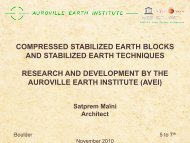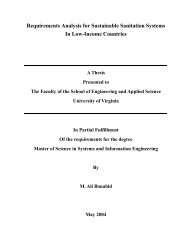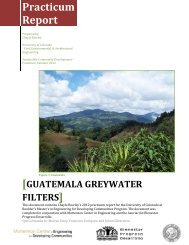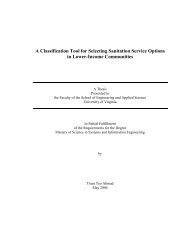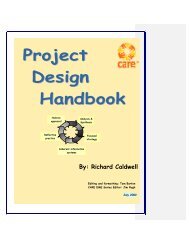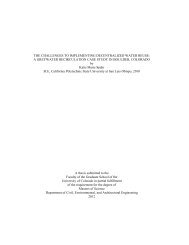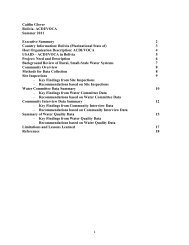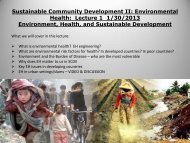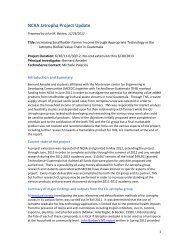SCEBs - University of Colorado Boulder
SCEBs - University of Colorado Boulder
SCEBs - University of Colorado Boulder
You also want an ePaper? Increase the reach of your titles
YUMPU automatically turns print PDFs into web optimized ePapers that Google loves.
variety <strong>of</strong> secondary benefits such as: (i) stimulating economic growth and create jobs in<br />
the local community; (ii) taking advantage <strong>of</strong> available renewable resources such as<br />
passive solar heating and geo-thermal heating; (iii) regulating indoor conditions such as<br />
humidity and air quality; and (iv) producing quality structures <strong>of</strong> which the builders and<br />
owners are proud. Changing demands regarding energy use, growing populations, and<br />
resource depletion will ultimately bring more attention to applying earthen building<br />
techniques in “modern society”. However, the process <strong>of</strong> implementing a successful,<br />
earthen building plan involves multiple disciplines including human resources, geologic<br />
constraints, mining, resource delivery and processing, access to a skilled labor force,<br />
quality control testing, approved building plans, etc. These and numerous other factors<br />
are an inherent challenge when applying earthen building technology.<br />
Perhaps the most concerning issue regarding SCEB technology may be public<br />
acceptance in regions where earthen building is seen as inferior to more contemporary<br />
building materials, such as timber, concrete and steel. While several exceptions exist,<br />
earthen building techniques are typically limited to one story structures. In large cities,<br />
where <strong>of</strong>ten the most cost effective option is to build vertically, earthen building<br />
technology is highly restricted. Additionally, the percentages <strong>of</strong> the population living in<br />
earthen homes today tend to be among the poorest. Because <strong>of</strong> this, there exists a social<br />
stigma around living in an earthen structure in many developed communities. Earthen<br />
structures are viewed as being primitive, rodent infested, cold and damp (Minke, 2006).<br />
While these are just stereotypes, the building market strives to meet market demands<br />
dictated by the consumer. In this way, earthen building can be restrictive. As trends<br />
4



